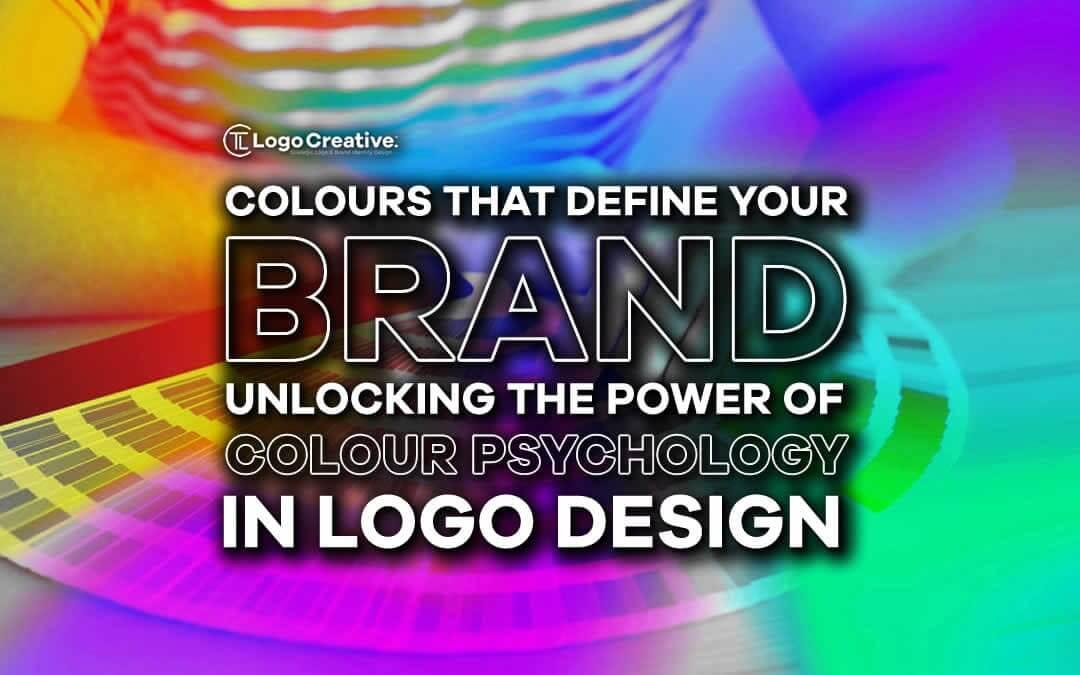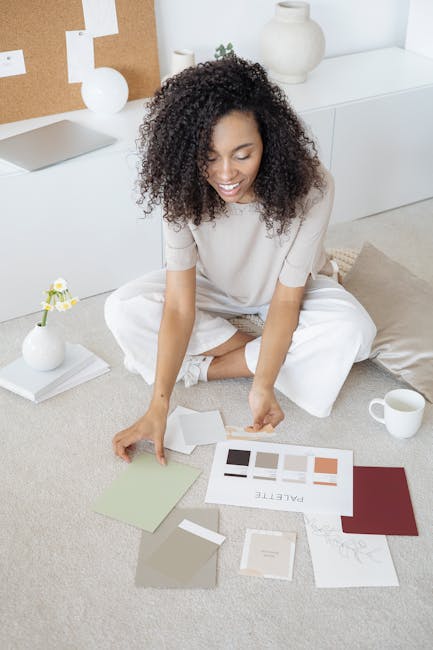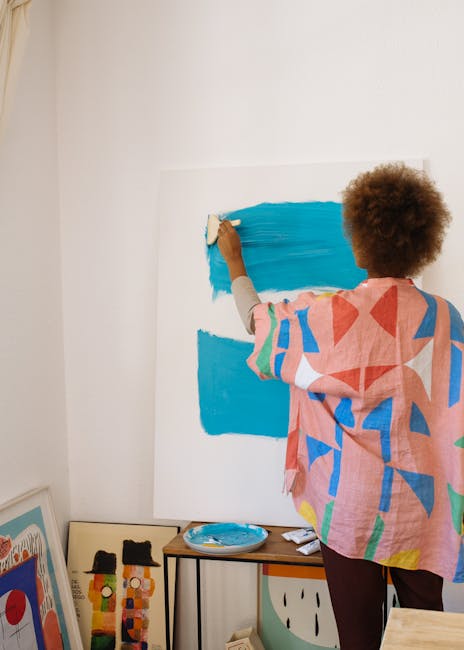
Are you tired of your logo blending in with the beige wallpaper at your cousin’s dentist office? Do you dream of a logo that pops like a fireworks display on the Fourth of July? Well, fret no more, my design/” title=”Dental Logo Design”>color-confused comrades! In this article, we’re going to dive headfirst into the vibrant world of color theory and help you choose the perfect hues for an eye-catching logo design that will have your competitors green with envy (pun intended). So grab your paintbrushes and let’s make some magic happen!
Understanding the Psychology of Color
Have you ever noticed how certain colors can evoke specific emotions or reactions? It’s like they have magical powers over our brains! Let’s delve into the fascinating world of color psychology and uncover the secrets behind our favorite hues.
First up, let’s talk about everyone’s favorite color – blue. Known for its calming and soothing effects, blue is like a big, warm hug for your brain. It helps promote relaxation and reduces stress levels, which is probably why it’s so popular in bedrooms and spa settings.
Next, we have yellow – the color of sunshine and happiness. This vibrant hue is like a shot of espresso for your mood, instantly boosting your energy and mood. It’s no wonder why fast-food chains often use yellow in their branding – it makes us feel hungry and ready to chow down!
And let’s not forget about red – the color of passion and intensity. This bold hue can increase heart rate and blood pressure, making it perfect for grabbing attention. That’s probably why it’s a popular choice for sports teams and sale signs – it’s hard to ignore!
 Logo Design”>
Logo Design”>
Importance of Color in Logo Design
When it comes to logo design, color plays a crucial role in making a brand stand out from the rest. Choosing the right colors can evoke certain emotions and create a strong connection with your target audience. Imagine a world where all logos were in black and white – how boring would that be?
Color psychology is no joke, folks! Different colors can convey different messages, so it’s important to consider what you want your logo to communicate. For example, blue is often associated with trust and reliability, while red can evoke feelings of passion and energy. So, before you go ahead and slap any old color on your logo, be sure to think about what message you want to send to your customers.
Not only can colors evoke emotions, but they can also help your brand to stand out in a sea of competition. Imagine a world where all fast-food logos were green instead of red and yellow – you’d be lost in a sea of lettuce and broccoli! So, be bold with your color choices, and don’t be afraid to experiment with different combinations to find the perfect hue that will make your logo pop.
Remember, a logo is often the first impression that customers have of your brand, so make sure it’s a memorable one. And what better way to make a lasting impression than with a splash of color? So, go forth and embrace the power of color in logo design – your brand will thank you for it!

Choosing Colors that Reflect Your Brand
When it comes to , it’s not just about picking your favorite shades. You want colors that truly embody the essence of your brand and make a lasting impression on your audience. Here are some tips to help you select the perfect palette:
Consider your brand personality: Are you fun and quirky, or professional and sophisticated? Choose colors that match the vibe you want to convey. If you’re a laid-back, beachy brand, think about using soothing blues and greens. If you’re a bold and adventurous brand, maybe go for vibrant reds and oranges.
Think about color psychology: Colors have the power to evoke specific emotions in people. For example, blues and greens are calming and trustworthy, while yellows and oranges are energetic and exciting. Consider how you want your audience to feel when they interact with your brand, and choose colors accordingly.
Don’t be afraid to get creative: Your brand colors should be unique to you, so don’t feel restricted by traditional color palettes. Mix and match different shades to find a combination that truly represents your brand’s personality. And remember, it’s okay to change your colors as your brand evolves.

Avoiding Common Color Mistakes in Logo Design
When it comes to designing a logo, choosing the right colors is crucial. Here are some common color mistakes that you should avoid at all costs:
- Using Too Many Colors: Your logo should be simple and easy to recognize. Using too many colors can make it look cluttered and overwhelming. Stick to a maximum of three colors to keep things clean and cohesive.
- Ignoring Color Psychology: Colors evoke emotions and feelings in people. Make sure you choose colors that represent your brand and its values. For example, red can convey power and passion, while blue can symbolize trust and reliability.
- Not Considering Contrast: Your logo needs to be easy to read and distinguish, even from a distance. Make sure there is enough contrast between the colors you choose to ensure readability and visibility.
Remember, the colors you choose for your logo can have a big impact on how your brand is perceived. So, take the time to think about what each color represents and how it will resonate with your target audience. By avoiding these common color mistakes, you can create a logo that truly stands out and makes a lasting impression.

Utilizing Color Contrast for Maximum Impact
Color contrast is like adding sprinkles to your ice cream – it just makes everything better. With the right combination of hues, you can create eye-catching designs that pop like a bowl of neon-colored popcorn at the movies. When it comes to maximizing impact, utilizing color contrast is your secret weapon.
Picture this: a website with a black background and bold white text that screams “Hey, look at me!” It’s like a zebra wearing a top hat – you can’t help but pay attention. By playing with contrasting colors, you can guide your audience’s eyes to where you want them to go. It’s like being a magician, but instead of pulling a rabbit out of a hat, you’re pulling their focus to your call-to-action button.
But wait, there’s more! By strategically using color contrast, you can evoke certain emotions in your audience. Think of it as creating a visual soundtrack for your content. For example, pairing red and green together can make people feel festive (Christmas, anyone?), while blue and orange can give off a calming beach vibe. It’s like using color therapy to hypnotize your viewers into taking action. In conclusion, don’t be afraid to go bold with your color choices - after all, life is too short for bland designs.
How Font Choice Can Influence Color Selection
When it comes to choosing colors for your design project, the font you select can actually have a big influence on your color selection. It’s like the wingman at a bar – it can make or break your chances of finding the perfect match.
So, how exactly does font choice affect color selection? Well, for starters, certain fonts have a personality of their own. A bold, modern font might call for vibrant, eye-catching colors, while a classic, elegant font may pair better with more subdued, sophisticated hues. It’s all about finding the right balance and creating a harmonious relationship between your font and colors.
Think of it as a first date – you wouldn’t wear a ball gown to a casual coffee meeting, right? The same goes for fonts and colors. They need to complement each other and work together to create a cohesive look and feel. So, before you start picking out colors willy-nilly, take a moment to consider your font choice and how it can influence your color selection.
Remember, at the end of the day, the goal is to create a visually striking design that captures the attention of your audience. By paying attention to , you’ll be one step closer to crafting the perfect visual masterpiece. So go forth, experiment, and let your creativity run wild!
Achieving Balance in Color Choices for a Memorable Logo
When it comes to creating a logo that truly stands out, achieving balance in color choices is key. You don’t want your logo to look like a toddler went wild with a pack of crayons, but you also don’t want it to be so boring that it puts people to sleep. Finding that perfect middle ground is like walking a tightrope while juggling flaming torches – challenging, but oh so rewarding when you get it right.
One of the best ways to achieve balance in color choices for your logo is to start with a color palette that complements your brand identity. Think about the emotions and messages you want your logo to convey, and choose colors that resonate with those vibes. For example, if you’re a tech company aiming for a futuristic feel, you might opt for sleek, metallic shades like silver, chrome, and graphite.
Another tip for achieving balance in color choices is to use the 60-30-10 rule. This means selecting a main color that covers 60% of your logo, a secondary color that takes up 30%, and an accent color that makes up the remaining 10%. This ensures that your logo doesn’t overwhelm the viewer with a mishmash of competing hues, but still has enough variety to catch the eye.
Remember, a memorable logo is like a good joke – it should be simple, clever, and leave a lasting impression. So, don’t be afraid to get a little wild with your color choices, but always keep that balance in mind. With a bit of creativity and a dash of strategic thinking, you’ll have a logo that’s as unforgettable as a cat in a shark costume riding a Roomba. Now that’s branding done right!
FAQs
Why does color choice matter in logo design?
Well, think about it. Would you eat a brown banana? Probably not. Color has a big impact on how we perceive things, including logos. The right color can evoke emotions and make your logo stand out, while the wrong color can leave a bad taste in your customers’ mouths.
How can I choose the right colors for my logo?
First, you need to think about what message you want to convey with your logo. Are you a fun and quirky brand? Go for bright colors like yellow or orange. Want to exude sophistication and class? Stick to black and white or navy blue. It’s all about matching your colors to your brand’s personality.
Should I follow color trends when designing my logo?
Sure, if you want to blend in with the crowd. But if you want to stand out and make a lasting impression, it’s better to choose colors that speak to your brand’s unique voice. Trends come and go, but a well-thought-out color palette is timeless.
Can I use multiple colors in my logo?
Absolutely! Just make sure they complement each other and don’t clash. Think of your colors as a team of superheroes, each bringing their own unique powers to the mix. Together, they can create a logo that packs a punch.
What if I’m not sure which colors to choose?
Don’t panic! There are plenty of online resources and tools that can help you find the perfect color scheme for your logo. And if all else fails, you can always consult with a professional designer who knows their RGB from their CMYK.
In conclusion…
Choosing the right colors for your logo design may seem like a daunting task, but with a little creativity and humor, you can create a logo that truly stands out. Remember, colors have the power to evoke emotions, make a statement, and leave a lasting impression. So go ahead, have fun with your color choices and watch your logo design come to life!












